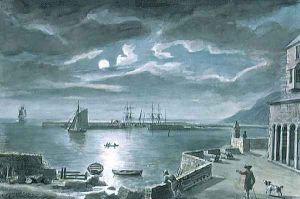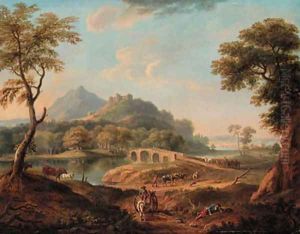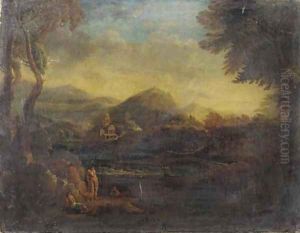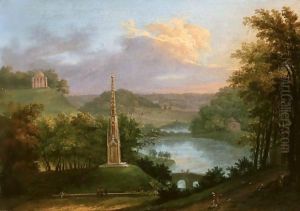Copplestone Warre Bamfylde Paintings
Copplestone Warre Bamfylde was an English gentleman, artist, and landscape designer of the 18th century, born into the prominent Warre and Bamfylde families in 1720. His life and career were marked by his dual interests in art and landscape gardening, which he skillfully combined to leave a lasting impression on the aesthetics of his time. Despite the era's limitations on professional artistic training, Bamfylde cultivated his skills in drawing and painting, primarily focusing on landscapes, a genre that was gaining popularity in England during his lifetime.
Bamfylde's artistic works are characterized by their detailed depiction of natural scenes, often inspired by the English countryside. His landscapes are considered a reflection of the contemporary shift towards romanticism in art, emphasizing the beauty and sublime qualities of nature. Alongside his painting, Bamfylde was deeply involved in landscape gardening, a field where his artistic sensibilities were put to practical use. He is known for his work on the gardens of Hestercombe House in Somerset, where he transformed the landscape to align with the picturesque aesthetic that dominated English garden design at the time.
His contributions to Hestercombe and other gardens helped to cement the picturesque movement, which advocated for gardens and landscapes that resembled the idealized scenes found in contemporary landscape paintings. Bamfylde's legacy in both art and landscape design is marked by his ability to blend these two disciplines, creating works and gardens that have been admired for their beauty and innovation. Despite not achieving widespread fame during his lifetime, his contributions have been recognized by historians and critics in the fields of both art and landscape architecture, underscoring his role in the development of 18th-century aesthetic thought and practice.
Bamfylde passed away in 1791, leaving behind a body of work that, although not extensive, is valued for its contribution to the English picturesque tradition. His life and achievements offer a unique insight into the interconnectedness of art and landscape design during a pivotal period in British cultural history, highlighting the role of individual creativity and vision in the evolution of aesthetic preferences and practices.




